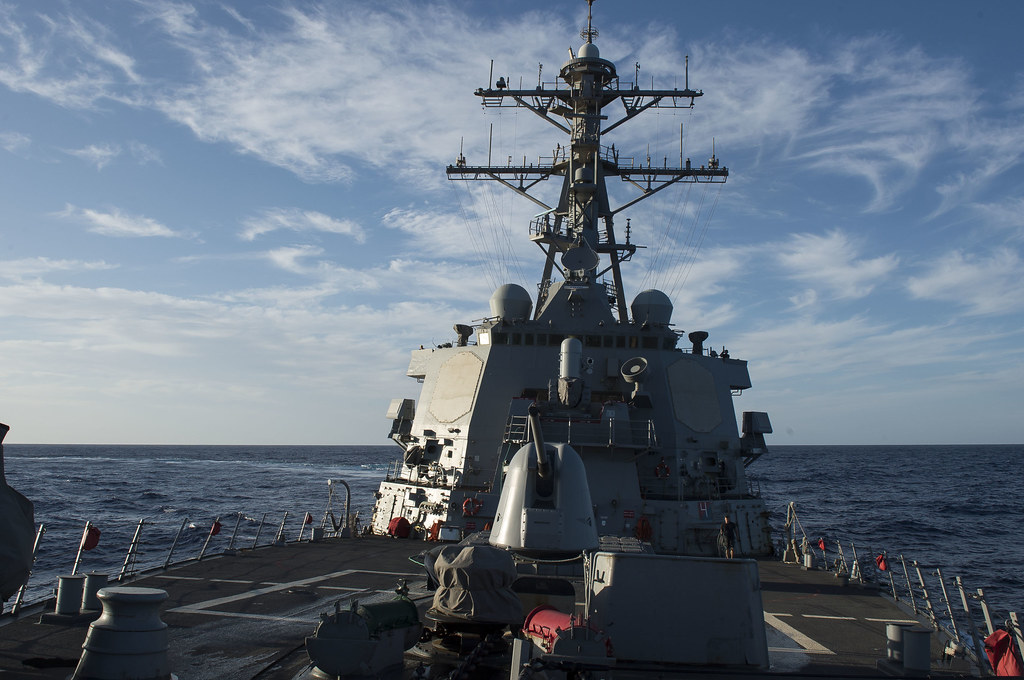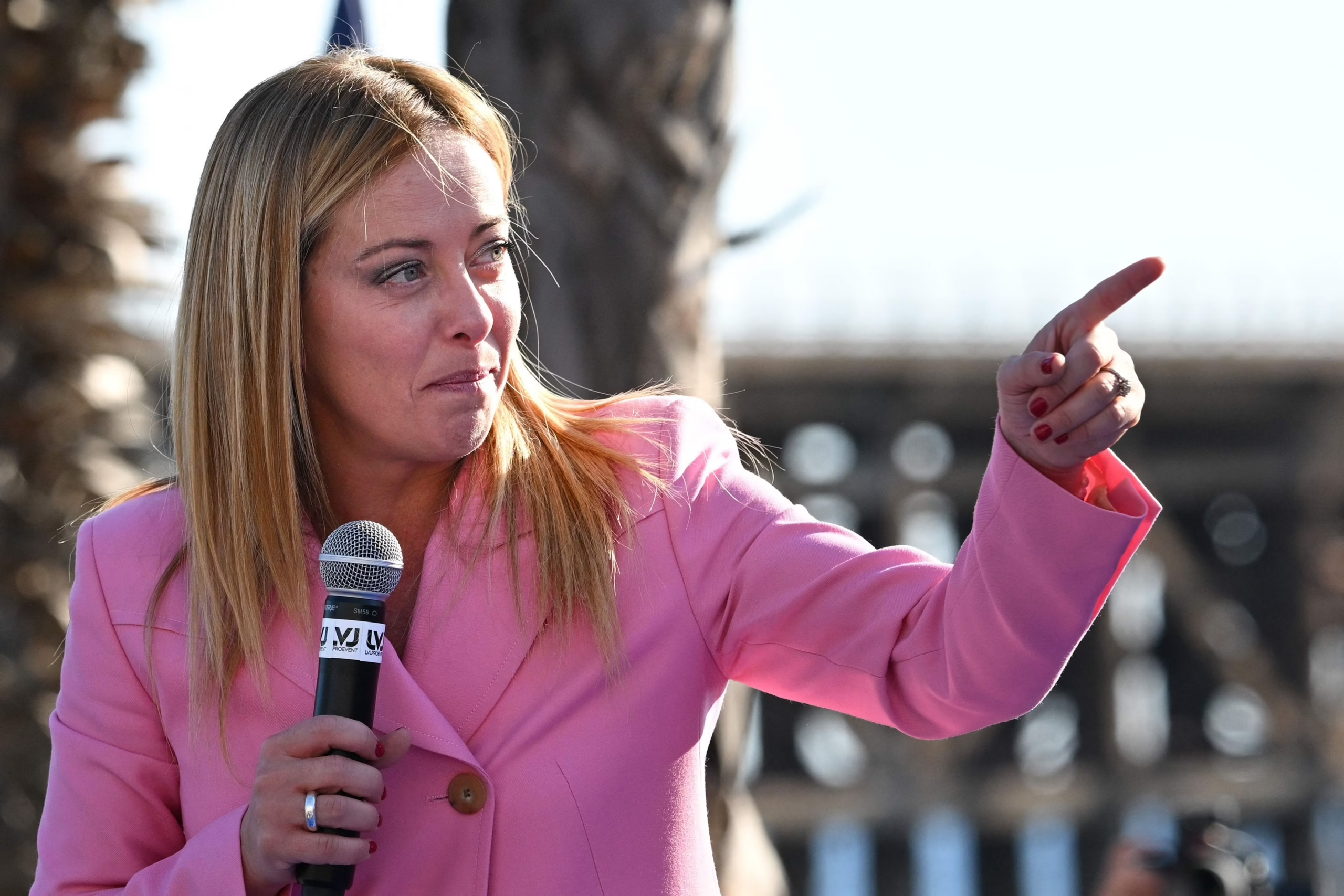European naval forces are setting sail towards Indo-Pacific waters to deter and, yes, contain the Chinese elephant in the room. Arguably the kind of eyebrow-raising ‘meaningful naval presence’ in the Indo-Pacific the European Union’s (EU) EU Strategy for cooperation in the Indo-Pacific published in 2021 talks about.
To be sure, without China and its unlawful and increasingly aggressively pursued territorial claims in the East and South China Seas there would be no French, Dutch, British, German and Italian frigates being deployed to Indo-Pacific territorial waters. There would be no Quadrilateral Security Dialogue (QUAD), no AUKUS either if it were not for China building military bases and facilities on artificial islands in proximity to disputed islands in the South China Sea. Calls directed at Europe to leave Indo-Pacific security, stability and naval patrolling up to the US and like-minded partners on the ground (Japan, Australia, India) have clearly ebbed down since the return of Donald Trump to the White House. Up until now, the Trump administration has shown below zero interest in following-up on his predecessor’s very active and arguably very successful alliance-building and boosting policies in the region. One that over the years 2021-2024 included the substantial expansion of defence and security ties with Japan, South Korea, India, Australia, Malaysia, the Philippines, you name it. Trump in turn is not in the business of building but instead dismantling alliances and de facto replaced Biden’s US-led minilateralism in the Indo-Pacific with his obsession of imposing trade tariffs onto friends and foes likewise.
The track record of European naval vessels being deployed to the Indo-Pacific over recent is nothing short of impressive. They have arguably gone beyond the stage of ‘symbolic’ and have ruffled enough feathers in Beijing for orders to deploy its navy and air force to ‘accompany’ European frigates through, and even better out of, international waters in the South China Sea and Taiwan Strait. Waters, which Beijing, in its by now familiar defiance of international law, insist are part of Chinese territory. Since 2020/2011 the UK, France, the Netherlands, Italy and Germany have been deploying frigates into the South China Sea and Taiwan Strait on an increasingly frequent basis. And there is no more informing of and – worse from a credibility point of view – asking Beijing for permission before sailing into international waters in the South China Sea and Taiwan Strait. Deployments into international waters, which as far as Beijing is concerned are part of Chinese territory as ‘evidenced’ by Chinese maps drawn in the Ming (1368-1644) and/or Qing (1644-1912) dynasties. A (much) more recent (2016) Permanent Court of Arbitration (PCA) ruling and verdict on the other hand ruled that Chinese self-declared territorial claims in the South China Sea are obsolete and indeed unlawful. Which Beijing apparently understood as invitation to speed up the construction of military bases and facilities in the South China Sea. By the time of this writing Beijing controls a 3.200-hectare network of artificial islands with military infrastructure such as runways, hangars, missile emplacements, and radar facilities. 27 military bases across various islands, including large facilities on Mischief Reef and in the Paracel Islands – bases featuring large runways, up to 70 fighter jet hangars, air defense and anti-ship missile systems, and advanced radar installations. Overall, bases capable of supporting and launching long-range aircraft and nuclear-capable bombers.
Are European naval vessels, individually or jointly with US, Japanese and Australian naval forces, prepared to go all in and confront Beijing upfront if push came to shove and Beijing used their military bases and assets in the South China Sea and block in the sealines of communication? Who knows, but in the meantime they are setting sail with France taking the lead. The self-declared ‘resident power’ France has 1.6 million French citizens in 7 overseas French territories living in the Indo-Pacific, controls 9 million square kilometres of Economic Exclusive Economic Zone (EEZ) in the Indo-Pacific and the French navy is equipped with the full spectrum of naval capabilities: nuclear-powered submarines, surface combatants, amphibious ships, maritime patrol aircraft, and an aircraft carrier. Since 2021, the French Navy deploys naval vessels to the South China Sea twice a year, complemented by regular deployments to the Taiwan Strait. In 2024, France dispatched a carrier strike group (CSG) as part of its Clemenceau 25 mission. The deployment consisted of the nuclear-powered aircraft carrier FS Charles de Gaulle, an air defence destroyer, an anti-submarine frigate, an air defence frigate, a nuclear-powered submarine (SSN), a logistics support ship and one offshore and assistance vessel. Unsurprisingly, the Chinese state-controlled media called that mission a part of ‘NATO expansion’ to Asia.
And Germany too has been sending frigates to the South China Sea and the Taiwan Strait. First in 2021, the second in 2024 and the third will take place in 2026. The first deployment was a fiasco and not exactly evidence of German security policy confidence and determination. Berlin’s navy at the time de facto asked Beijing for approval before sailing into the South China Sea and throughout its journey in Indo-Pacific waters did everything in its might not to encounter naval vessels from other countries. This was obviously in an attempt to avoid being accused of ‘teaming up’ with others against China. The second German deployment was much better in that respect as Berlin’s navy sailed into in the South China Sea and Taiwan Strait without checking-in with Beijing and therefore made it onto Beijing’s list of countries being accused of ‘interfering’ in Chinese domestic policies.
Finally, Italy. Arguably, geographically a bit of stretch, Rome decided that the Indo-Pacific can also be referred to as the ‘wider Mediterranean’ (Mediterraneo allargato), its traditional theatre of naval deployments and patrolling. In May 2023, Italy’s navy deployed a multipurpose offshore patrol vessel which sailed into the Indian Ocean and into the South and East China Seas on its way to Japan. This was followed by the deployment of a Carrier Strike Group (CSG) which conducted naval exercises with the US, Japan and India. In January 2025 Italy’s Marceglia frigate set sail towards the Indian Ocean.
And now what? Does Beijing have to be worried about Europe and its navies putting their money where their mouths are if Beijing went beyond ‘only’ constructing military bases without using them? If the EU’s reaction, well, non-reaction to China providing Russia with massive amounts of dual-use technology with largely military applications is anything to go by, then the answer is probably no. When Russia invaded Ukraine more than three years ago, Brussels warned Beijing not to overdo it with its support for the Russian aggressor announcing to impose sanctions onto China if and when dual-use technology exports to Russia fall under the category of ‘lethal aid.’ A ‘red line’, as far the EU Commission led by Ursula von der Leyen at the time was concerned. Looking at what Russia is buying from China in terms of dual-use technology today, that ‘red line’ has arguably been crossed and indeed turned into a far away ‘red dot’ out of sight. Get this: China is providing Russia machine tools, drone and turbojet engines, technology for cruise missiles, microelectronics, and nitrocellulose, which Russia uses to make propellant/fuel for weapons. Chinese companies – obviously with the approval of the Chinese government – export components for military equipment, including jet fighter parts, machine tools for ballistic missiles, parts for mobile radars, computer chips, optical components for Russian tanks etc. All of which are so-called ‘high priority’ items: dual-use products essential for manufacturing weaponry like missiles, drones, and tanks: semiconductors, telecommunications equipment, and machine tools.
If that is not ‘lethal aid’, then what is?
Axel Berkofsky is Associate Professor at the University of Pavia, Italy and Co-Director of the Asia Centre at the Milan-based Istituto per gli Studi di Politica Internazionale (ISPI). Axel Berkofsky is also Member of the Executive Committee of the Canon Foundation Europe, Executive Committee Board Member at the Stockholm-based European Japan Advanced Research Network (EJARN) and Research Affiliate at the European Institute of Japanese Studies at the Stockholm School of Economics.
This article is published under a Creative Commons license and may be republished with attribution.





